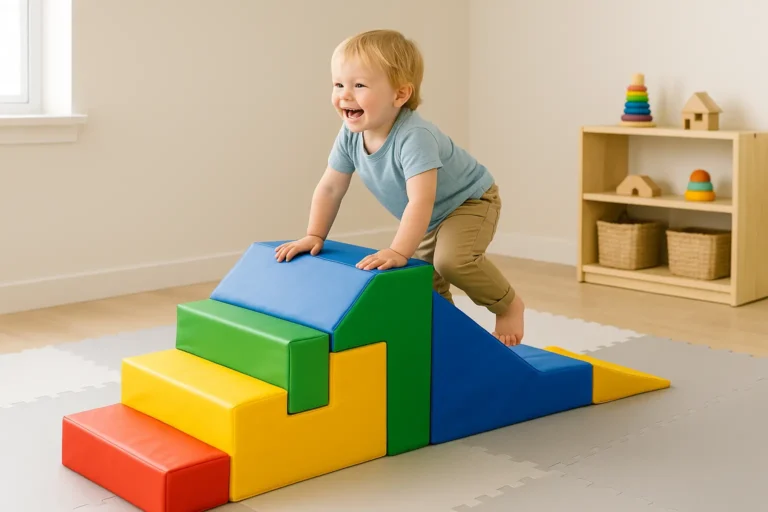Climbers give kids with autism, ADHD, or sensory processing challenges a fun way to build coordination, strength, and body awareness—all while meeting sensory needs.
Why Climbers Help
Climbing is a natural way for children to get vestibular (balance) and proprioceptive (muscle & joint) input. Sensory climbers provide a safe, structured way to:
- Build strength in core, arms, and legs.
- Develop coordination through problem-solving body movement.
- Boost confidence with safe challenges and “I did it!” moments.
- Provide sensory regulation through heavy work and controlled motion.
Types of Sensory Climbers
Metal Bar Climbers
Indoor/outdoor gym sets for older kids, providing strength & vestibular input.
See on AmazonAttachable Wall/Tree Climbers
Handholds or ladders attach to walls, play gyms, or trees for advanced challenges.
See on AmazonBudget-Friendly vs Advanced Options
Budget picks: Foam climbers are affordable and safe for young kids indoors. Wall/tree climbers can be affordable but are too advanced for younger kids.
Advanced picks: Wooden climbers and metal bars are higher investment pieces for older kids and therapy spaces.
How to Choose: Pros & Cons
| Type | Pros | Cons |
|---|---|---|
| Foam Sets | Soft, safe, beginner-friendly, indoor use | Outgrown quickly, less challenging |
| Wooden Climbers | Durable, natural look, great for toddlers–elementary | Requires space, mid-range cost |
| Metal Bars | Strong vestibular input, full-body workout | Bulky, higher cost, setup required |
| Wall/Tree Climbers | Advanced climbing, confidence-building | Not for beginners, needs supervision & secure setup |
Safety Considerations
- Always supervise children during climbing.
- Place foam mats or padding underneath metal/wooden climbers.
- Ensure weight limits match your child’s size and age.
- Anchor wall or tree climbers securely to prevent accidents.
Frequently Asked Questions
Which sensory climber is best for toddlers?
Foam climbers are safest and most engaging for toddlers and preschoolers.
Are wooden climbers durable enough for daily play?
Yes, high-quality wooden climbers are sturdy and often used in Montessori setups for daily climbing.
What’s the safest option for older kids?
Metal bar climbers and attachable wall kits are best, but should always be paired with mats and adult supervision.



